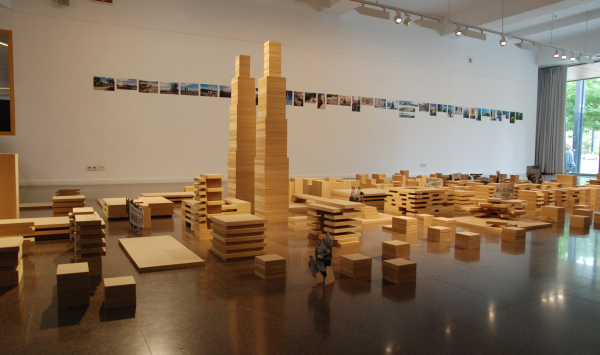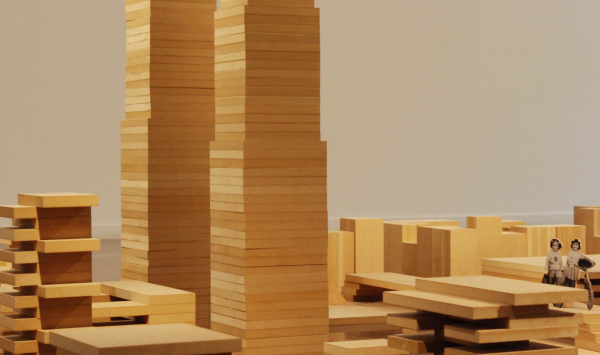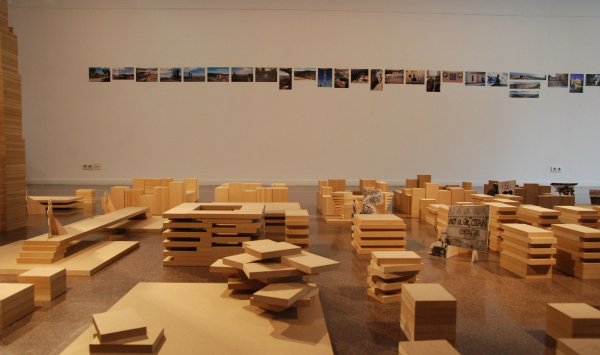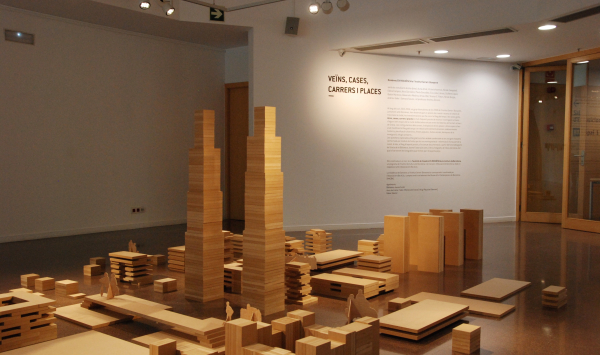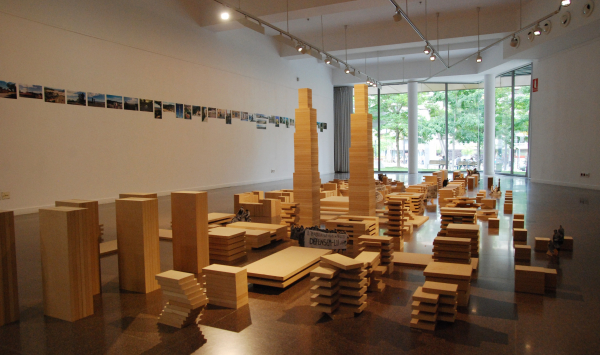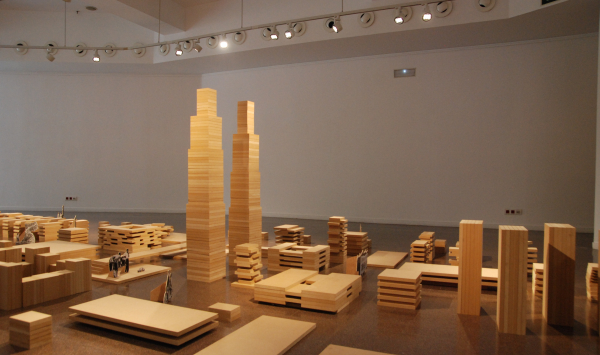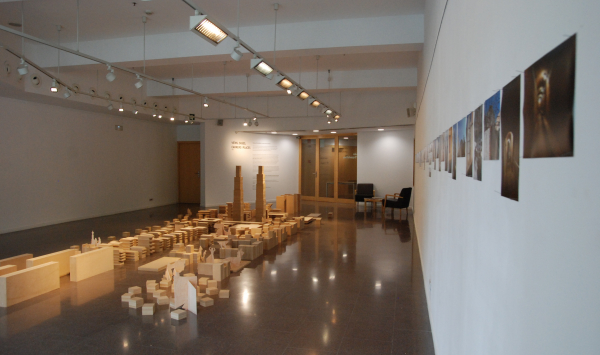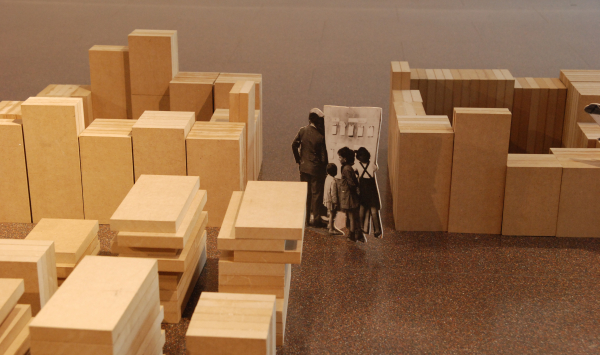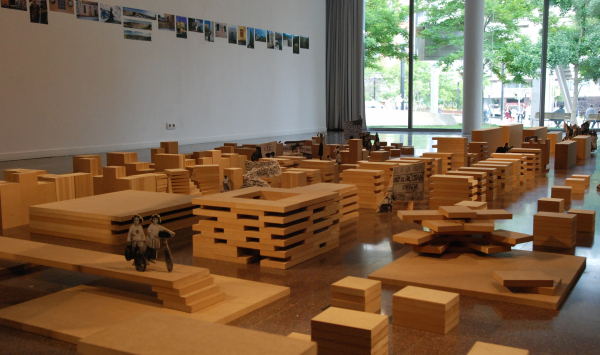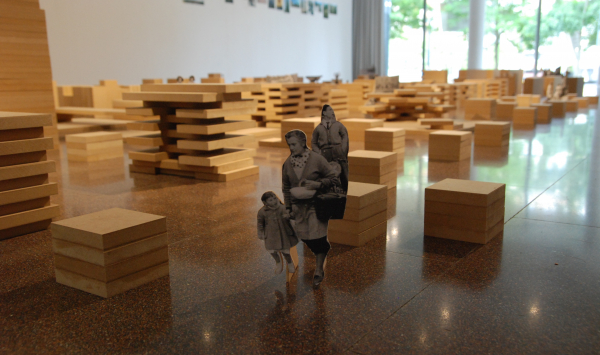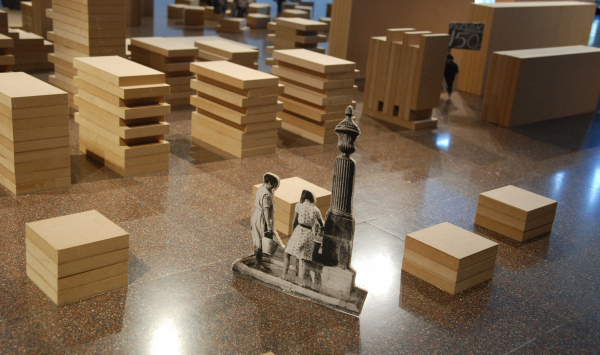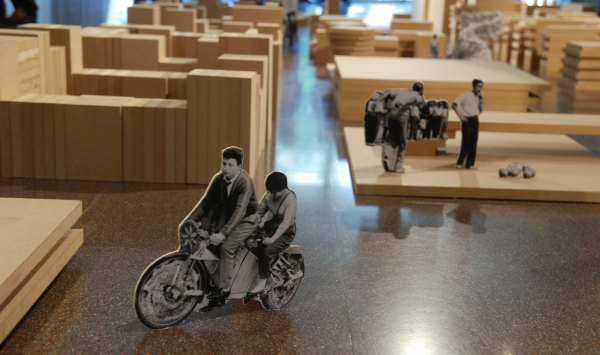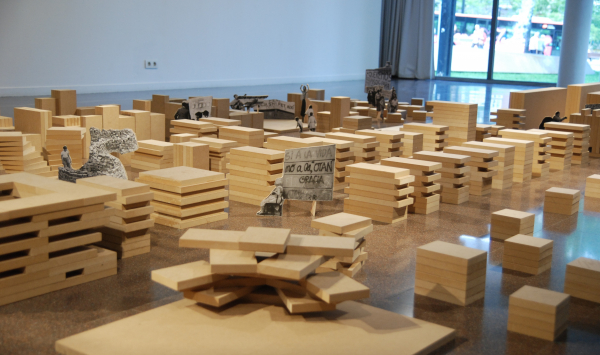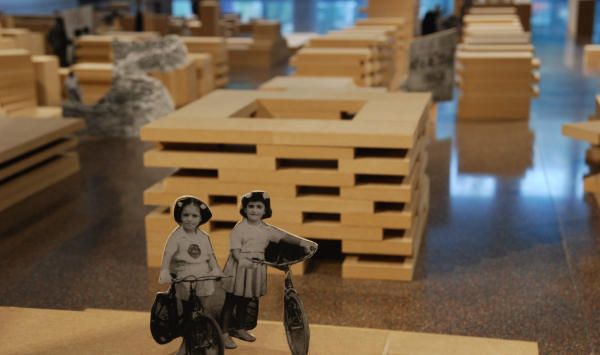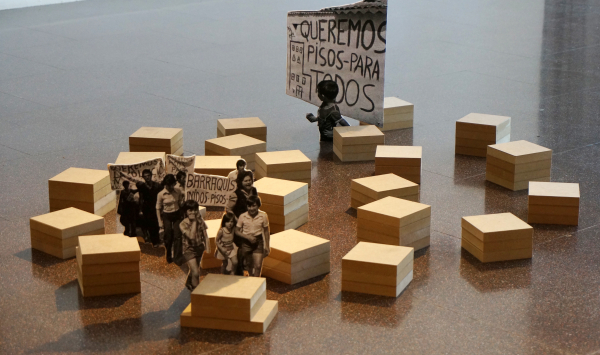- 14th EDITION 2022 / 2023
- 13th EDITION 2021 / 2022
- 12th EDITION 2020 / 2021
- 11th EDITION 2019 / 2020
- 10th EDITION 2018 / 2019
- 9th EDITION 2017 / 2018
- 8th EDITION 2016 / 2017
- 7th EDITION 2015 / 2016
- 6th EDITION 2014 / 2015
- 5th EDITION 2013 / 2014
- 4th EDITION 2012 / 2013
- 3rd EDITION 2011 / 2012
- 2nd EDITION 2010 / 2011
- 1st EDITION 2009 / 2010
Domènec IN RESiDENCE at the School Josep Serrat i Bonastre
Residents, Houses, Streets and Squares
Veïns, cases, carrers i places [Residents, Houses, Streets and Squares]
Installation
Wood and photographs
Variables sizes
The final piece, a large model made from wooden modules, was generated from the exploration of the city, the group's closest environment. The city was the framework for reflection during residency, more specifically an area from the gun batteries at El Carmel to the Gràcia neighbourhood. Various different approaches were taken throughout the process, from outings, organised visits, photographic explorations and so on. Particular emphasis was also placed on the Archive of Gràcia and the collection of old photographs of the neighbourhood, which were eventually included in the installation as a way of invoking the people and histories that inhabit and have inhabited the city.
Presentation
The presentation of Veïns, cases, carrers i places [Residents, Houses, Streets and Squares] took place on June 6 in the exhibition room at the Biblioteca Jaume Fuster library. There, the participating pupils, with Domènec and the teacher Andreu Álvarez, described the different stages in the creative process and explained the different parts of the piece on show. The introductory text to the exhibition, jointly written by pupils and artist, read as follows:
“Over the 2015-2016 academic year, a group of second-year secondary pupils at Institut Serrat i Bonastre, with Domènec, worked on a creative research process that focused on three main themes: the city, its transformations over time and its people.”
Veïns, cases, carrers i places [Residents, Houses, Streets and Squares] is the result of this research process, which took us to different sites in the city of Barcelona between the gun batteries at El Carmel and the Gràcia neighbourhood. The layout of streets, the arrangement of squares and other spaces have changed over the years, affected by different phenomena: historic events, urban planning developments, popular festivities, residents' protests, migrant shanty towns, air-raid shelters and so on.
The issues we explored over the course were condensed into a large model formed by wooden modules, a reworking and reinterpretation of part of the city. Moreover, over the course of this process, we searched for documentation in the Gràcia Bibliographic Collection, conserved by Biblioteca Jaume Fuster library, and the Gràcia Photographic Archive, from which the photographs in this piece were taken.”

